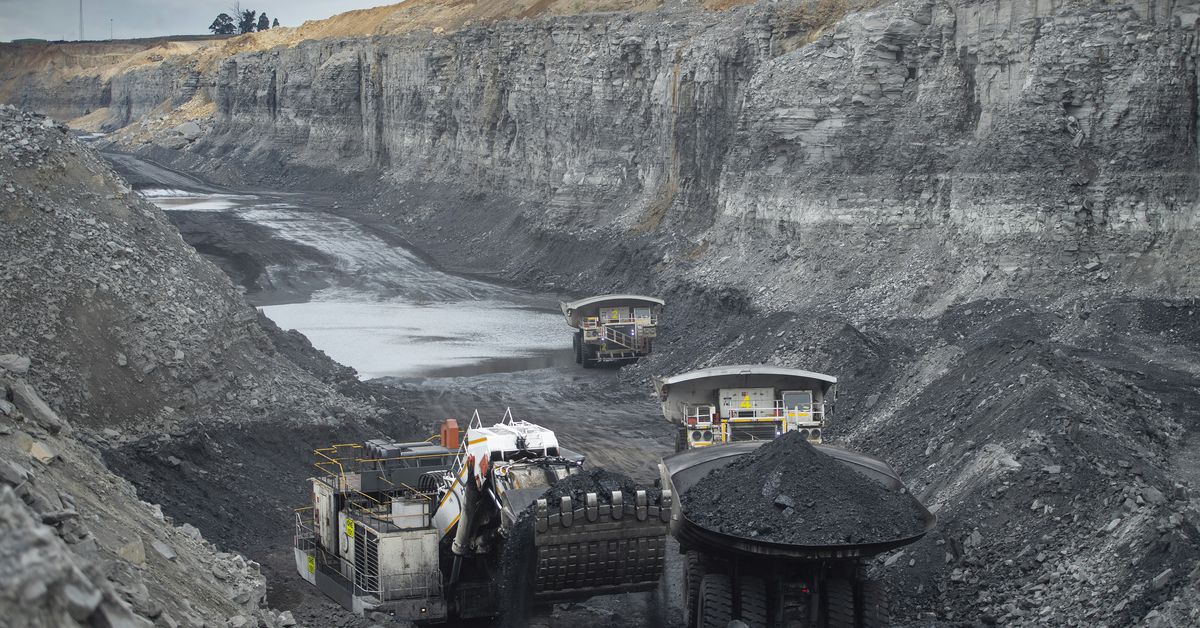LONDON, Aug 31 (Reuters) – Some coal producers are having to set aside tens of millions of dollars to cover their own risks as they are cut adrift by insurers, making it more difficult and costly to do business amid a surge in demand for the fossil fuel.
Dozens of insurers have announced restrictions on their cover for the coal industry, particularly for new projects, in response to pressure from shareholders, governments and environmental groups who want to limit coal’s contribution to global warming. This follows similar moves by banks to restrict their coal financing activities.
Coal miners need extensive insurance including for operations, property, equipment, and environmental liability. Three insurance brokers said it can now take months and dozens of enquiries to find such coverage for a coal client.
Reuters spoke to five coal mining executives who said that the industry is increasingly moving towards self-insurance and self-finance, as the difficulty of securing coverage from insurers makes loans more expensive or unavailable.
Some miners, including South Africa’s Seriti Resources and Thungela Resources (TGAJ.J), are already setting aside capital to self-insure and only buying insurance to protect against larger and less frequent losses.
While Seriti has said it is not struggling to get funding from banks, securing insurance cover has become more challenging, according to its chief financial officer Doug Gain.
“In recognition of ESG and related factors shrinking the availability of thermal coal insurance capacity globally, Seriti has embarked on a journey toward increased self-insurance,” Gain told Reuters via email.
He did not elaborate on the cost for Seriti, which supplies many of South Africa’s coal power stations.
Many coal producers are finding workarounds and production continues to rise. The International Energy Agency (IEA) forecasts 2023 global supplies will surpass last year’s record of 8.6 billion tons, after the energy crisis triggered by Russia’s invasion of Ukraine forced many countries to use coal to keep the lights on.
But the need to earmark funds for self-insurance ties up money on the balance sheets of coal companies and could leave them vulnerable to large costs when something goes wrong, industry analysts say.
Three analysts told Reuters that coal companies have been able to absorb any increase in costs due to record profits last year, but may find it harder in leaner times, as the issues with insurance ultimately push up the cost of production.
“Financing becomes impossible without insurance,” said Liberum equity analyst Ben Davis.
“For existing producers at the moment, this is not a massive issue because they can still set funds aside, given sustained coal prices. But there are going to be tougher times ahead for the ones that don’t set the money aside,” he added.
The dwindling supply of insurance for coal producers has led to premiums rising nearly three times as much as an industry benchmark, data from brokerage Willis Towers Watson shows.
Thermal coal insurance rates rose more than 20% last year, it said, above the 7.3% rise in the benchmark Marsh Global Insurance Market Index.
Whitehaven Coal (WHC.AX), Australia’s top independent coal miner, has seen its insurance costs roughly double over the last two years, a person familiar with the company who asked not to be identified because the information is financially sensitive, told Reuters.
Whitehaven declined to comment.
TAKE COVER
Seriti has a combination of self-insurance to cover damage to some assets, while retaining some cover from the insurance industry such as flood damage or underground fire damage, a spokesperson said.
To reduce the cost of insurance cover, Seriti is increasing the retention of capital in its own insurance unit so that only excess layers of risk need to be insured by third parties.
“We expect the availability of insurance capacity for thermal coal assets to continue to shrink over time and the capacity will likely be extremely limited by circa 2030,” Gain said.
In the case of Thungela – a company spun off from Anglo American – it set aside R1.2 billion ($67 million) to self-insure some of its risk last year, while still sourcing its catastrophic risk cover, including events like mine collapses or natural disasters, from the insurance market.
Thungela told Reuters it intends to become fully self-insured in future, without specifying the timeframe.
Forty-five insurance companies have introduced restrictions now on cover for the coal industry, including Allianz, Swiss Re and Munich Re, according to the Insure Our Future environmental pressure group.
Some insurers still have relatively large fossil fuel businesses, with Bermuda’s AEGIS, China’s PICC, Russia’s SOGAZ, Switzerland’s Chubb and Germany’s Allianz the top five by gross premiums in 2022, according to data exclusively provided to Reuters by Insuramore, which produces insurance rankings and analysis.
AEGIS said in an email that its coal business represents a small portion of its total and was decreasing, while Allianz said it will phase out coal-based business by 2040.
Chubb, which says it does not insure new risks for miners generating more than 30% of their revenue from coal, declined to comment. China’s PICC and Russia’s SOGAZ did not respond to a request for comment.
Some coal producers have set up their own separate company to deal with their insurance – called a captive – which can be covered by a combination of their own funds, individual insurance companies, and a group of insurance companies working together to share the risk with so-called reinsurance.
Insurance companies can be active in both primary insurance and reinsurance and have differing commitments on ESG for different parts of their business.
“The majority of the reinsurance market remains open to the ongoing operations of coal companies but not their new projects,” said Insure Our Future coordinator Peter Bosshard.
MUTUAL INSURANCE FUND
In Australia, coal companies have explored setting up a mutual insurance fund that they would all pay into as a form of self-insurance, but talks have stalled with a lack of government support, people familiar with the matter said.
“Establishing a mutual fund for the coal industry is a matter for the coal industry,” a spokesperson for the Australian Department of Treasury said. “Any financial support or guarantee for a mutual fund would involve a decision of government.”
The spokesperson did not say whether the government had been approached by companies about the fund.
Nombasa Tsengwa, Chief Executive Officer at South African coal miner Exxaro Resources (EXXJ.J), said that insurers in some countries and regions, including in Asia, were more willing to do business than elsewhere.
“What we have also noticed is that there are other jurisdictions that are interested in absorbing the risk of coal businesses,” Tsengwa said, referring to more stringent regulations in Europe.
“I’m talking about going beyond your normal UK-based markets and looking into Asia for funders and insurance cover,” she added.
Coal prices hit record highs in September last year as European countries scrambled to replace Russian gas, sending coal miners’ profits soaring.
But prices have since fallen and analysts say the need by producers to meet more of their own financing and insurance requirements could exacerbate the impact of weaker prices on profits.
Thungela and Exxaro saw their profits fall by 75% and 29% respectively in the first half on weaker prices. Major diversified miner Glencore (GLEN.L) said its industrial assets’ profit fell by 51% in the first half due to lower prices, particularly in coal, and inflationary costs.
Reporting by Clara Denina and Sarah McFarlane
Additional reporting by Nelson Banya; Editing by Elaine Hardcastle and Daniel Flynn
Our Standards: The Thomson Reuters Trust Principles.
Read the full article here





